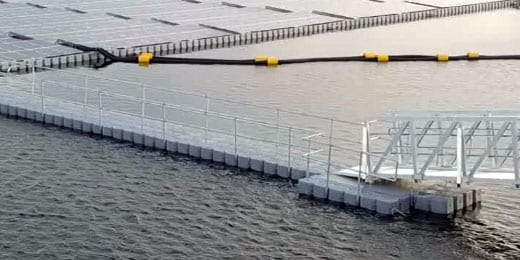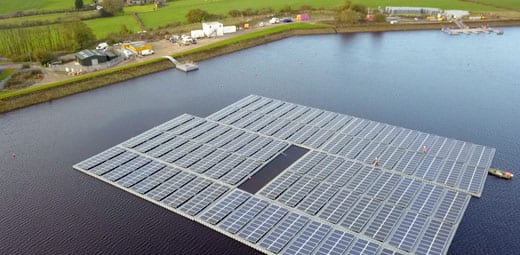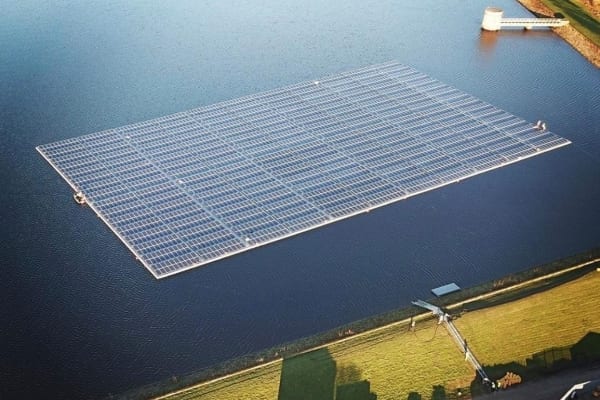
How Do Floating Solar Panels Work?

A fairly new concept, floating solar technology patents were first registered in 2008.
From its first patent, floating solar had grown rapidly and been installed all around the world, in countries including in countries such as Japan, China, The United Arab Emirates, and the United Kingdom. Floating solar farms are based solely on the water surface, meaning they require no valuable land space.
What were once unused bodies of water, such as reservoirs for dams and drinking water or wastewater treatment facilities can be transformed into floating solar arrays. Land owners can therefore make use of an area that would not normally be used, instead of creating the installation on useful land areas that could serve a better purpose. When installing solar panels on water bodies, the need for forest removal or tree clearing is gone.

Floating Solar Locations
Usually floating solar array installations are located on inland waters, such as lakes or river basins, as these are generally more calmer than tidal waters. Floating solar structures can also regularly be found on man-made water bodies such as reservoirs, this is especially common in the UK.
Higher Performance from Your Solar Panels

Although solar panels perform in high temperatures and are generally durable, they can, as with other electronic machines, produced less power output when in a higher temperature. If customers looking for solar panels live somewhere with a warm and largely sunny climate, a concern for them can be the fact that panel performance can reduce as the temperature rises.
When installed on water bodies, the natural environment around the floating solar arrays helps to keep the solar panels and equipment cooler. This in turn means they are able to offer a higher amount of efficiency and produce more electricity in places where the climate is warmer.

Get In Touch
Alternatively known as floatovoltaics or floating photovoltaic (FPV), floating solar structures can be any combination of solar panels that float on a body of water.